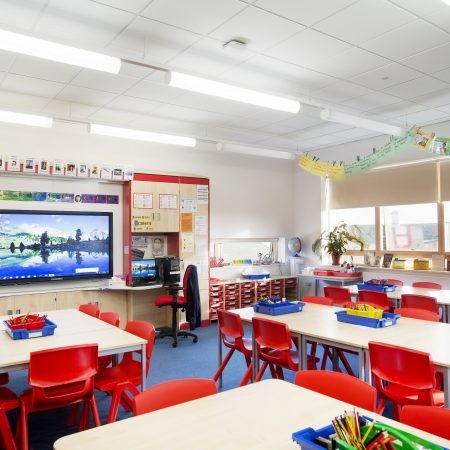Controlled Acoustics Mean Better Inclusion and More Effective Learning
Acoustic properties are one of the most important factors in designing effective learning environments. They’re also one of the hardest to control.
Noisy environments have been shown to affect cognition and learning because they have a direct impact on speech clarity. Poor acoustics also get in the way of inclusion because they have particularly severe effects on students with auditory processing difficulties, attention deficits and whose first language isn’t English.
For all students, noisy classrooms make learning more difficult and teaching more stressful.
The Output Specification sets out expectations for ambient noise levels, reverberation times and sound insulation. The key question is how to ensure that these standards are achieved in practice.
The sound levels that have to be controlled include noise generated inside the classroom and noise from outside including stairwells, corridors, other classrooms and heating and ventilation systems. There are many factors to consider and small variances can easily accumulate to create a noisy environment.
If the performance requirements aren’t met by the initial build, remedial actions can be costly and time consuming – and they might not be fully effective. The best way to guarantee performance is to engineer it into the structure and the fabric of the building.
A Standardised Product Means Controllable Performance
Controlling acoustic properties is another area where working with a standardised construction product pays dividends. The i-FAST panels in Osborne’s InForm product have acoustic performance built-in. The panels are inherently better at absorbing sound than hard traditional building materials.
The specification can be flexed for situations where external noise levels are expected to be higher. This could, for example, include classrooms close to communal or circulation spaces or schools located near main roads or airports. Our design teams also frequently enhance acoustic performance to suit the specific needs of SEND students.
Tight production tolerances ensure that the carefully modelled acoustic performance isn’t affected by air gaps at interfaces or around doors and windows. Lack of precision can make a surprising difference to the noise levels inside the classroom, which may not be easy to rectify once the construction phase is completed.
For more information about Osborne’s InForm product for education construction contact Mike Peskin ([email protected]). Or visit our resource centre.

